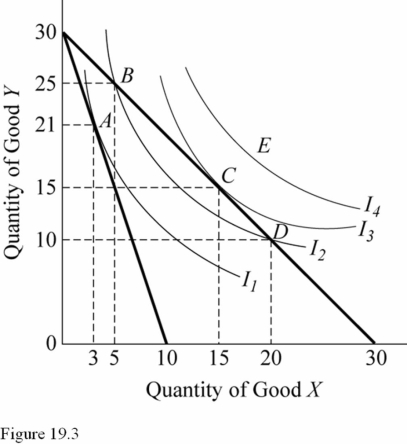Multiple Choice
 Use the indifference curves and the budget lines in Figure 19.3 to answer the indicated question. Assume the price of Y is $1 per unit. In Figure 19.3, given an income of $30 and a price for good Y of $1, which of the following two points represent optimal consumption?
Use the indifference curves and the budget lines in Figure 19.3 to answer the indicated question. Assume the price of Y is $1 per unit. In Figure 19.3, given an income of $30 and a price for good Y of $1, which of the following two points represent optimal consumption?
A) A when the price of X is $3 and C when the price of X is $1.
B) B when the price of X is $1 and D when the price of X is $3.
C) A when the price of X is $1 and D when the price of X is $3.
D) B when the price of X is $1 and C when the price of X is $3.
Correct Answer:

Verified
Correct Answer:
Verified
Q1: The law of diminishing marginal utility does
Q30: The point where the budget constraint and
Q50: If there is no budget constraint,utility maximization
Q63: The farther an indifference curve is from
Q64: If an individual demands a good,it means
Q73: Status and ego considerations in consumption are
Q76: Price discrimination occurs when consumers have only
Q78: A successful advertising campaign will<br>A) Increase the
Q132: Maximum utility is achieved when<br>A)Total revenue is
Q135: The law of diminishing marginal utility gives